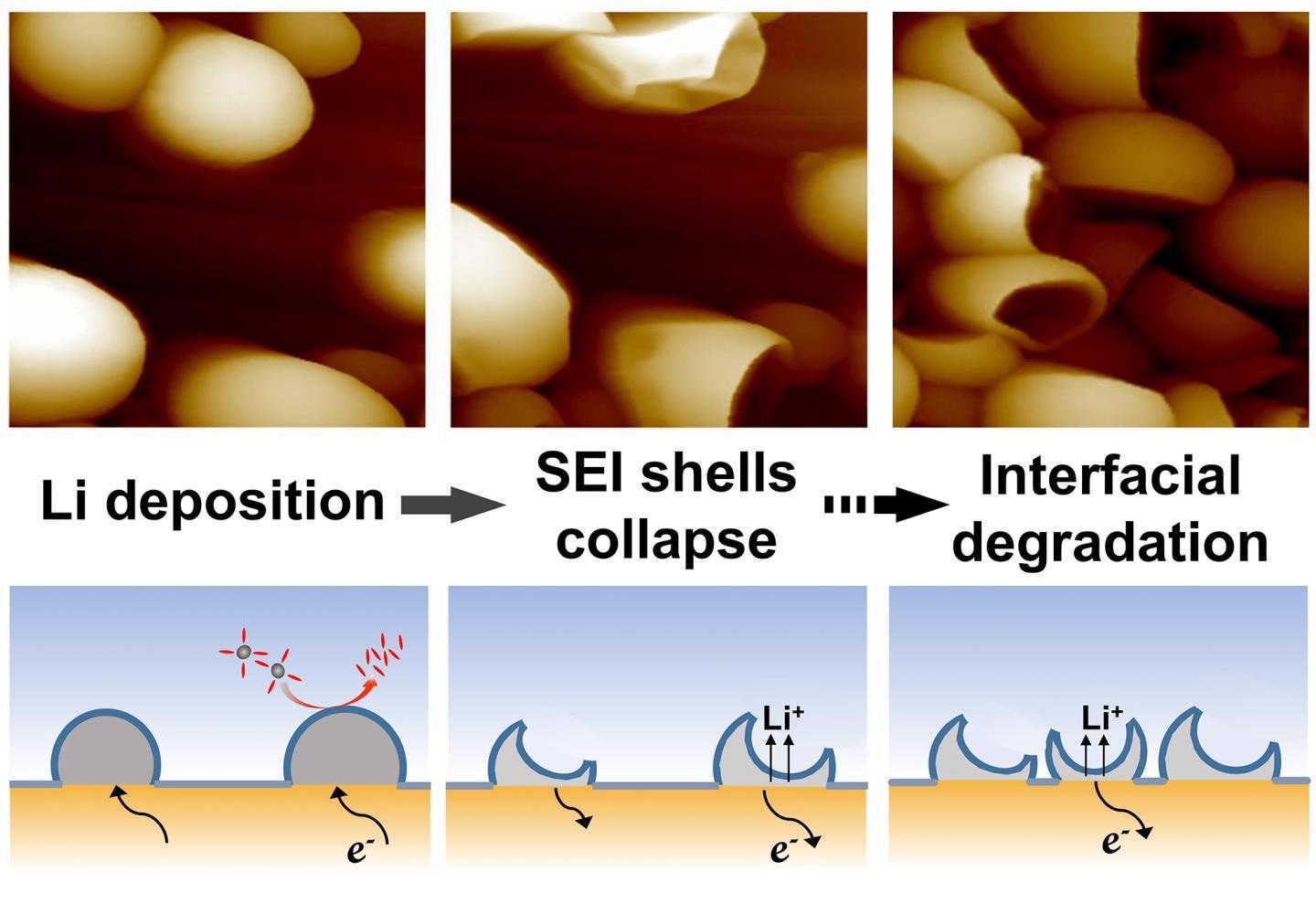Apr 5 2021
The electrochemical performance of lithium (Li) batteries is mainly governed by the interfacial decomposition products that form what is called the solid-electrolyte interphase (SEI) at the time of the first charging or discharging.
 The SEI shells evolution processes and degradation mechanism at the electrode/electrolyte interface. Image Credit: ©Science China Press.
The SEI shells evolution processes and degradation mechanism at the electrode/electrolyte interface. Image Credit: ©Science China Press.
Until now, chemical compositions, dynamic evolutions, stabilities, and the impacting factors of the SEI films have gained considerable attention.
Contrary to the formation of SEI film at the surface of electrodes, it has been observed that a type of SEI shells generally develops conformally at the outmost layer of the on-site deposited Li as the newly deposited Li gets in touch with the electrolyte. This could have a direct impact on growth behaviors, Li nucleation and electrochemical properties at the electrolyte-electrode interface.
Moreover, the chemical or morphological instabilities of the on-site developed SEI shell pose problems for the in-situ characterizations. It is vital to directly capture the dynamic evolution of the SEI shells to interpret their effects on the anode-elelctrolyte interface and battery performances.
The electrochemical atomic force microscopy (EC-AFM) allows real-time characterization of mechanical modulus, morphology change and potential-current distribution at the electrode-electrolyte interface under working conditions. This offers an essential in-situ analysis technique with a high spatial resolution for examining the dynamic evolution of the on-site developed SEI shell on the deposited Li.
Professor Li-Jun Wan and Professor Rui Wen et al. recently came up with the direct evidence of SEI shells evolution at the time of Li deposition or stripping to show the degradation of anode through in-situ EC-AFM.
At the time of Li deposition, the quasi-spherical Li particles tend to nucleate and grow on a Cu electrode. Later, the collapse of the SEI shells is captured clearly with the uninterrupted Li stripping.
As the cycling advances, new Li deposits are inclined to get renucleated on the deposit-free sites with larger electrochemical activity. The fresh SEI shells develop on freshly deposited Li, while the actual SEI shells maintain their collapsed morphology at the same position. Acute SEI regeneration or collapse together with an increase in interfacial impedance and depletion of electrolyte is one of the causes for the anode degradation.
This study shows the interfacial evolution at the nanoscale, thereby offering a better understanding of the basic comprehension of SEI properties and further offers enhancement approaches for the interface design in Li batteries.
Journal Reference:
Shi, Y., et al. (2021) In-situ nanoscale insights into the evolution of solid electrolyte interphase shells: revealing interfacial degradation in lithium metal batteries. Science China Chemistry. doi.org/10.1007/s11426-020-9984-9.